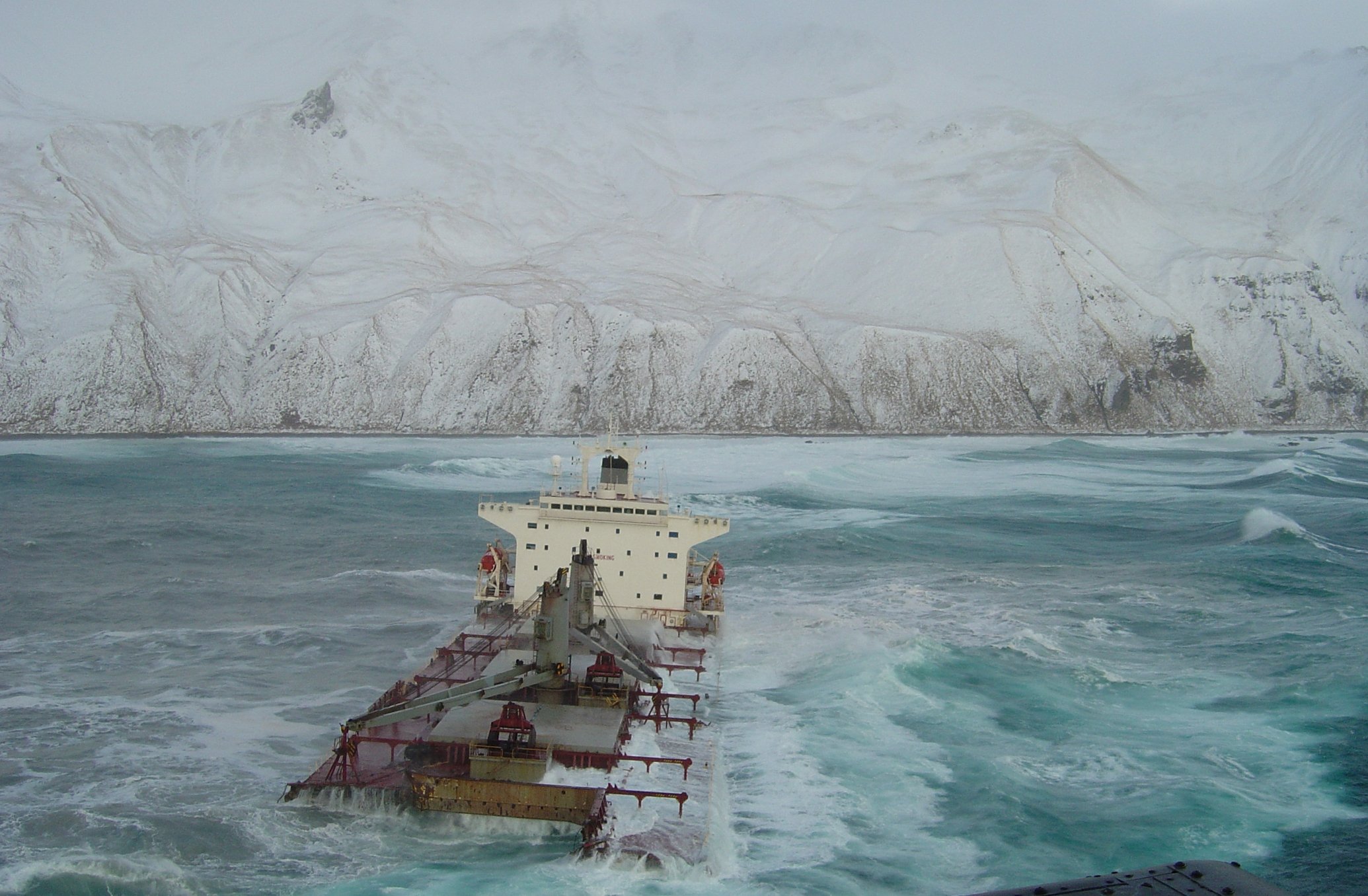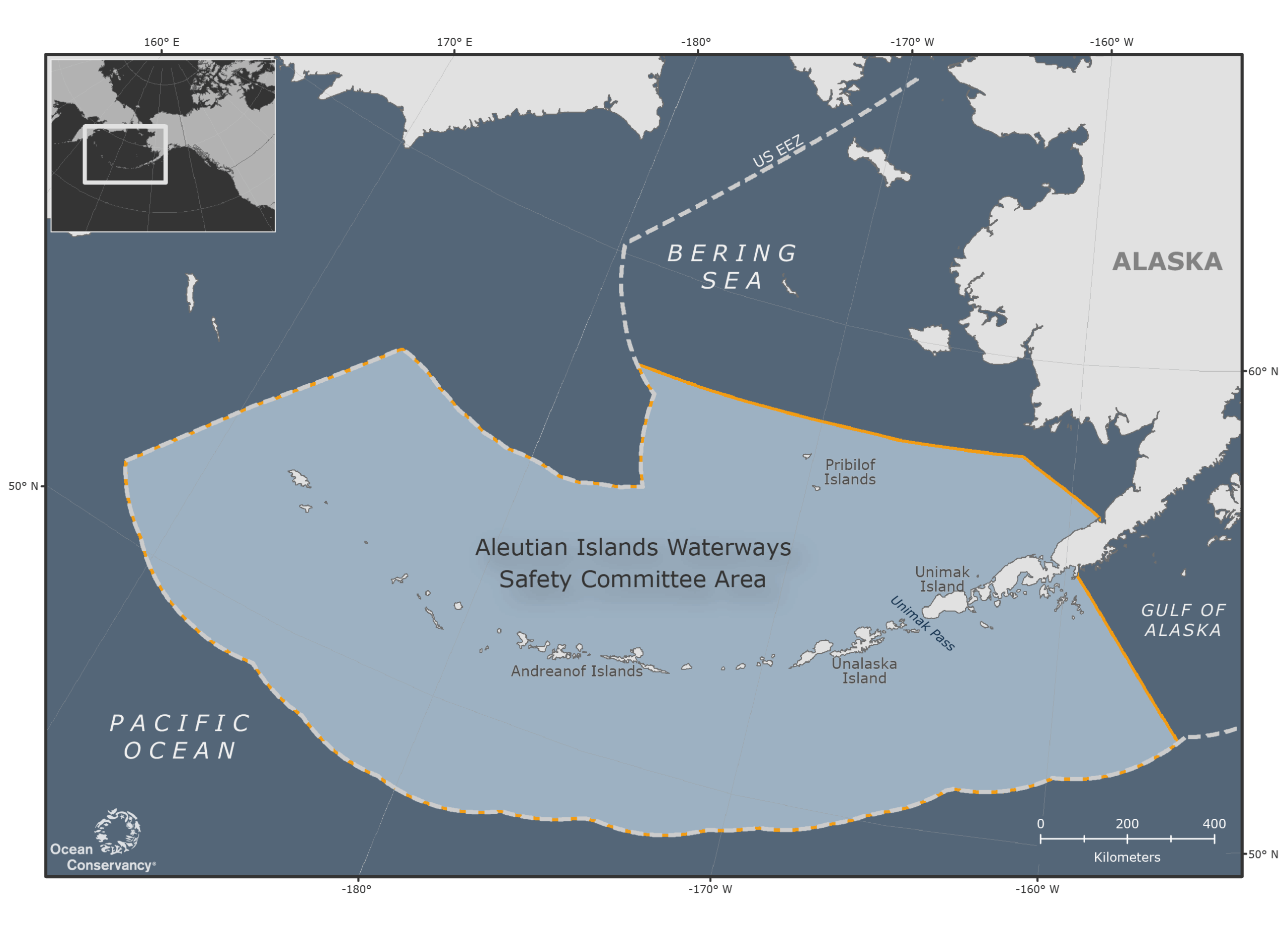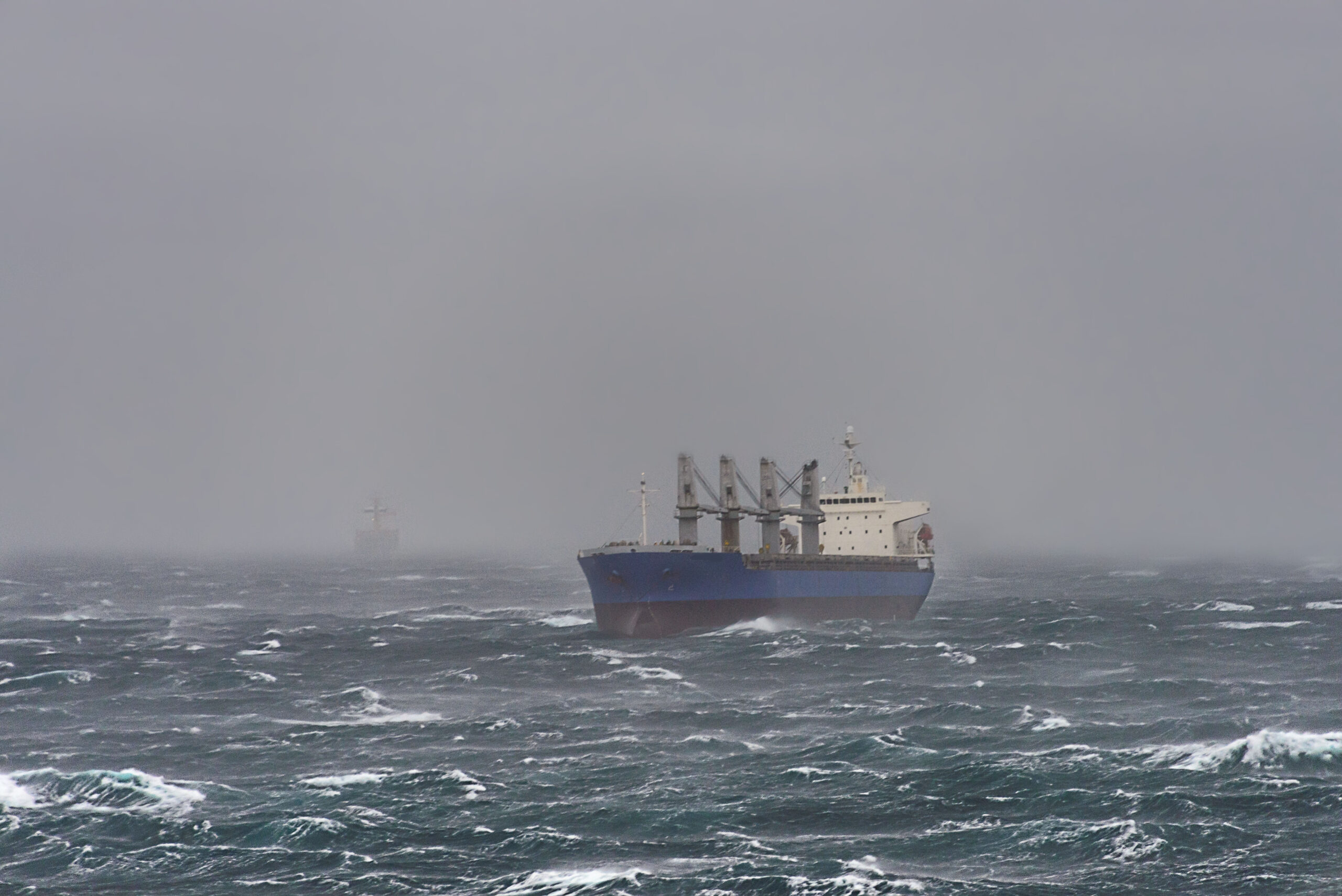New Shipping Safety Plan Adopted in Aleutian Islands Region
Plan will help reduce risks and protect marine environment

Early last year, I wrote about the initial meeting of a new group called the Aleutian Islands Waterways Safety Committee. The committee provides a forum for mariners and other stakeholders to exchange information and establish best practices that promote safety in the waters surrounding the Aleutian and Pribilof islands.
I’m pleased to report that the committee has made great strides over the past year. On May 1, it adopted a new Waterways Safety Plan for the region. The new plan will help mariners recognize risks in the region and implement safety practices that also protect the marine environment.
The Waterways Safety Plan covers a vast area, extending north and south of the entire U.S. portion of the 1200-mile Aleutian Island chain, including the Pribilof Islands. The waters surrounding the Aleutian and Pribilof islands are home to an abundance of marine life. They host a rich diversity of fish, birds and marine mammals, important subsistence fisheries and some of the largest and most valuable commercial fisheries in the country.

In addition to its wildlife habitat and fisheries, the area includes a portion of the North Pacific Great Circle Route, a busy shipping corridor between North America and East Asia. Vessels that travel along this route include massive tankers and large, deep-draft craft—like container ships and bulk carriers—that may carry hundreds of thousands of gallons of fuel. An oil spill from one of these ships could be catastrophic.
What’s more, this part of the North Pacific and Bering Sea is well-known for its powerful storms that create extremely challenging weather and sea conditions. To make matters worse, the region has limited emergency response resources. Given this combination, it’s perhaps little surprise that major marine accidents have occurred in this region, claiming lives, destroying property and inflicting environmental harm.
The biggest recent shipping disaster was the grounding of the M/V SELENDANG AYU in 2004, which led to the death of six people during rescue operations and spilled more than 335,000 gallons of oil into the ocean. Bad as it was, the SENENDANG AYU accident served as a wake-up call; it triggered a formal risk assessment that led to advances in risk mitigation and emergency response capabilities.
The adoption of the new Waterways Safety Plan is another step forward. It will help make mariners aware of relevant local knowledge and best practices so that they can make more informed decisions as they travel through the region. For example, the plan provides information about severe weather, tsunamis and the availability of emergency towing systems and ship arrestors in the region.

The Waterways Safety Plan was formulated during a collaborative process with committee members, including representatives of Alaska Natives, the shipping industry, commercial fishermen and conservationists, represented by Ocean Conservancy. In addition, state and federal government agencies—such as the U.S. Coast Guard and State of Alaska Department of Environmental Conservation—advised the committee and helped develop the safety plan.
While the Waterways Safety Plan is complete, committee members recognize that both the region itself and the maritime activities its supports are in a constant state of change. For that reason, the committee intends to revise and update the plan in response to new information, new technologies and new or evolving maritime operations.
Interested in learning more? You can read through the Waterways Safety Plan yourself at the Aleutian Islands Waterways Safety Committee website.